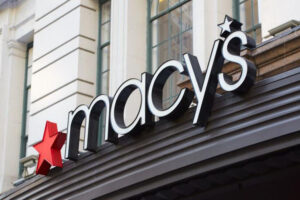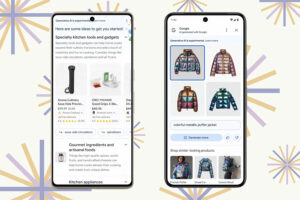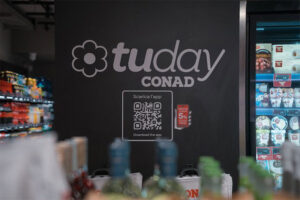How to Target Luxury Consumers in Three Steps?
Mobile users now represent close to 5 billion people worldwide, and half them are using social media platforms on their mobile devices an average of two hours per day. In light of these staggering numbers, social media now represents one of the most effective ways to reach consumers anytime, anywhere.
In fact, it is expected that social media advertising revenue will reach an impressive US $41 billion in 2017. And, by 2020, social media advertising will have caught up with newspaper advertising revenues.
Social media platforms collect so much data on these users that it allows brands to target their key audiences and prospective clients in truly targeted ways, representing a key advantage over other medias.
So, how can the luxury industry seize the opportunity offered by social media platforms and the advanced features they offer in terms of targeting?
1. Explore the basics
Start with making use of the in-built targeting options offered by most social media platforms. These options allow brands to choose from a wide range of criteria, in order to zero in on the ideal customer.
- Using interests targeting, brands can target users that are already following them or have an interest in their brand or products. Alternatively, since these people already know the brand in question, they can be excluded from the targeting. Focus instead on targeting people interested in the brands’ competitors but not yet in them, to try to win them over.
- Using demographics data, brands can go one step further. On Facebook for instance, brands can target consumers based on where they’re based. So we can already think that it would be interesting to target wealthy cities or neighbourhoods, or even get-away destinations popular among wealthy people. Combine this precise and qualitative location targeting to additional variables such as where they studied, who their employer is, in what industry they work, and even their income (in the US), and you end up with a qualitative targeting that has high-potential for conversion.
- Using important personal milestones can also be a particularly powerful way of approaching luxury consumers. Brands can target people that just had their birthday or are going to have it in the very near future, people that have just got a new job, or even couples that are newly engaged or newlyweds. By doing this, brands are able to get in front of the right people at the most appropriate time; that is when they’re celebrating and potentially more likely to be in the right mindset to purchase luxury goods for themselves or their loved ones
2. Take advantage of advanced features
Even though the basic options are very useful, and can generate extremely good results, social media platforms have evolved drastically over the years. Many now include more advanced features within their advertising tools, collecting data from a number of sources.
Probably social media marketers’ best friend when it comes to targeting, Custom Audiences are the most powerful way to improve campaign results. Custom audiences can be created using four different sources of data: mobile apps, websites, social media engagements, and even customer files.
Brands can create multiple Website custom audiences and create their own scenarios using the Facebook Pixel tool. It can be as simple as creating a segment of the people who visited the website in the last 30 days, or it can be based on specific pages that people visited, how long their visit lasted, or even if they added a product to their cart but never completed the purchase.
This “retargeting” would show them the same products they saw during their visits, and could promote a limited deal, for instance. In this way brands are able to personalize their content based on concrete actions, which typically improves conversion rates and return on investment.
Similarly, if a company has a mobile app, creating custom audiences based on App Activity allows to target and reach people based on specific actions taken within their app, such as people visiting specific sections, adding items to their cart, purchasing products, or rating the app.
Social media engagement can also be used to create custom audiences. Engagement custom audiences allow brands to target people who have interacted in any way with your social media content. For instance people who liked your post or watched a specific percentage of one, or a combination, of your videos.
Custom audiences can also be created using customer files. Using this option, brands import a CRM database, and Facebook will automatically see if the people on the list are using Facebook. If they are, Facebook will see the match and add them to the custom audience. This is a true differentiator, as brands can use existing customers (or prospects) and target them specifically on social media.
It is easy to understand why campaigns using custom audiences are so successful. Brands are able to target people who already know them and their products, who are already actively engaging with them on social media or on their website, or are even customers already. As a results of this, they are much more likely to like and trust their business, and have a higher potential to generate revenues.
3. Go beyond & expand your reach
So far, we’ve seen that social media platforms offer various features allowing luxury brands to effectively target their clients, as well as reach current and future high-quality prospects. However, most of these features are helping brands target people who have already engaged with them in some way.
How can a luxury brand expand its social advertising reach to include prospects outside of its traditional or current audience? With Facebook, Social Media Marketers are able to do just that, using Lookalike Audiences.
Facebook defines Lookalike Audiences as “a way to reach new people who are likely to be interested in your business because they’re similar to people who already are”. Put simply, brands simply need to choose a data source from existing audiences they created and Facebook will find people who “look like” them in the country/countries chosen.
The data source for lookalike audiences can be based on any of the custom audiences (website visitors, customer database, engagements, etc.), or even fans of your page. In short, Facebook takes these audiences and finds a way to “clone” them, allowing brands to reach new segments of people with the same characteristics as their existing audiences.
This not only increases the probability that they become clients themselves, but thanks to this highly qualitative approach it usually delivers the best results.
Facebook also recently launched a new ad format for mobile devices called Collections. It combines a video, slideshow or image displayed above a collection of related product images. Clicking on any of the images will open a immersive user experience, highlighting up to 50 products in a full-screen experience within Facebook. When clicking on a product, people are then redirected to the website or app where they can buy the product.
Options like Collections are still in their infancy, but they already give a good overview of where Facebook is planning to go in relation to e-commerce.
Next Step? Test and Learn
Social Media platforms represent one of the surest ways to to reach anyone, anywhere, anytime. With investments rising exponentially every year, it’s more critical than ever that brands effectively take advantage of the extremely powerful features these platforms offer.
With the ability to track actions taken by the users, and see concrete ROI, social media gives brands a unique opportunity to gain in-depth knowledge about their current and potential audiences, based on their interests, behaviours, and actions.
With so many options at their disposal, we recommend to our clients that they invest in a test & learn model: analysing and optimizing along the way. In doing that, luxury brands will be able to gather precious insights into their consumers and how they respond to their content, allowing them to use these learnings to further feed and nurture their global marketing strategy.
Source: Luxury Society




